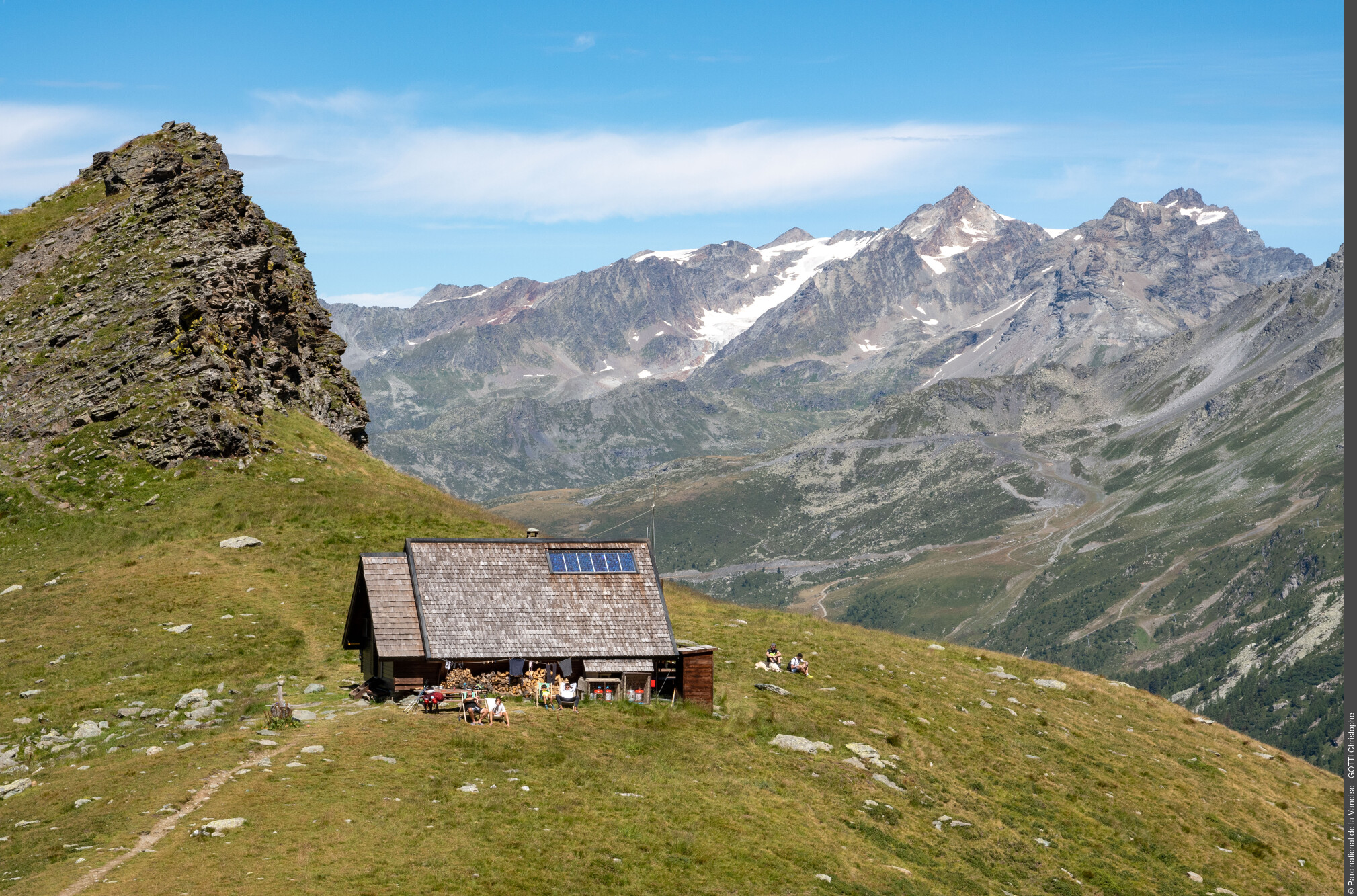
Refuge de Turia
Sheer slope, typical mountain village dominated by inaccessible glaciers which seem to touch the sky... A route full of personality, at the gates of the high mountain.
High above, there nestles a charmingly unspoilt refuge, barely disturbed by the silent flight of the golden eagle.
Christian Balais, Vanoise National Park ranger
Description
From Chantel car park, take the vehicle track on the right. About 100 m after 2 successive hairpin bends, the track turns into a trail. After the passage of the Cousset stream, the trail meanders while climbing through the forest. Follow the trail leading to the mountain pastures as far as the hamlet of Cousset, which you then pass. A signpost for ""Cousset 2015 m"" awaits you upstream of the buildings. There is about a 1 hour walk following the trail, with no intersection. To return, follow the trail in the opposite way.
"- Departure : Chantel car park, Hamlet of Gurraz, Villaroger
- Arrival : Chantel car park, Hamlet of Gurraz, Villaroger
- Towns crossed : VILLAROGER
Forecast
Altimetric profile
Recommandations
Information desks
Tourist Information Office - Séez
25 rue Célestin Freppaz, 73700 Séez
Transport
Rail connection to Bourg-Saint-Maurice. Information: www.voyages-sncf.com
Then transport by coach to the administrative centre of Haute-Tarentaise. Information: www.transavoie.com
Also think about car-sharing with www.mobisavoie.fr
Access and parking
On the D902 between Sainte-Foy Tarentaise and the Tignes dam, take the small road in the direction of the village of Gurraz. Cross the hamlet (narrow street) and park at its exit on the right (Parking).
Parking :
9 points of interest

Arrivée perturbation venue d'est, avec débordement frontalier de nuages sur les cols de la Traversette et du Saint-Bernard. - PNV - BALAIS Christian  Viewpoint
ViewpointBalcony overlooking Mont Blanc
To the north, beyond the summits bordering the right bank of the valley of Col du Petit St Bernard, rises an imposing glacial massif. At a height of 4,810metres, Mont Blanc, the highest mountain in the Alps, looms over the steep Italian slope. Glaciers and rock walls block the horizon in an awe-inspiring, wild landscape which proves difficult to access. It is the domain of the exceedingly high mountain.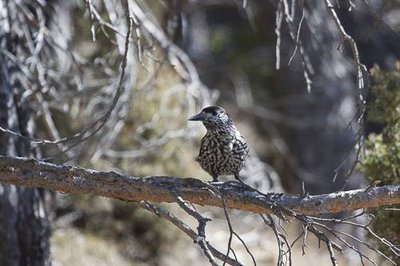
Casse-noix moucheté. - PNV - PLOYER Jean-Yves  Fauna
FaunaThe spotted nutcracker, guest of the conifer forests.
Amid two trees, an enormous figure passes by discreetly, with a sharp beak, mottled brown plumage and white-striped tail. Then, from the top of a spruce, the spotted nutcracker launches its discordant, raspy cry. This sedentary corvid lives in the coniferous forests where it feeds mainly on coniferous seeds. In the autumn it will bury its provisions although will sometimes forget them.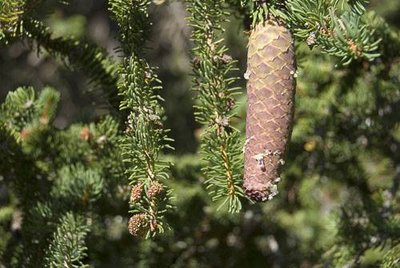
Cône d'épicéa avec perles de résines. - PNV - BALAIS Christian  Flora
FloraBarbs and woodpeckers
"The spruce flourishes on the ubac slope, dominating the hardwoods of the mountain zone. Often wrongly called ""fir"", it is easily identified by its cones which hang under the branches, with needles laid out around the twigs, prickly to the touch, while the tree is supple and soft under the hand. The trunk of the spruce is sometimes bored into by woodpeckers, in search of larvae or to house their brood."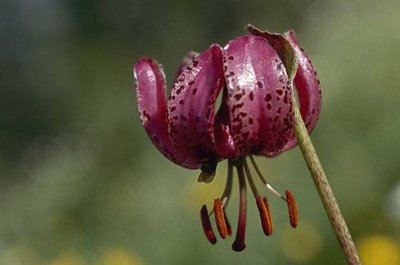
Lis martagon. - PNV - BOUCHE Michel  Flora
FloraMartagon lily, pick with your eyes only.
The martagon lily is an icon of the fresh woody slopes and dœs not go unnoticed, reaching one metre in height. At maturity (June-July) its large pink-violet flowers with purple spots have six large hanging stamens, crowned by six rolled up tepals (undifferentiated petals and sepals). Butterflies and other insects gather its pollen with their heads “upside down”. It is said that the alchemists who used this plant, under the aegis of the God Mars, gave this lily the name of martagon.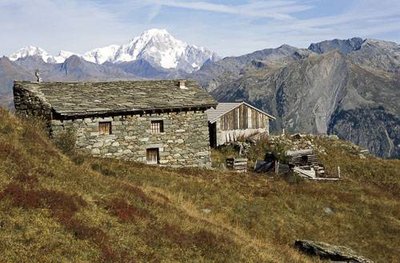
Les chalets de Cousset. - PNV - BALAIS Christian  History
HistoryCousset and Fenil: forgotten alpine pastures
On fine summer days, some of the renovated chalets still welcome the inhabitants of Gurraz and Savinaz. These former dwelling houses testify to a bygone agropastoral past, a time when all mountain acres, even the more difficult to access, were farmed. The hay was harvested and then stored on site before being taken down on wooden sledges. This was tough and intense work but essential for feeding the cattle in the winter.
Lande à rhododendron ferrugineux et saule glauque, surplombant le hameau de Chollière. - PNV - GOTTI Christophe  Flora
FloraHeather moors and alpine clubmoss
The alpine moor is home to several species of sub-shrubs. Adapted to the snow-capped slopes, the hardy ferruginous rhododendron bursts with light from the beginning of summer. More fragile in appearance, the foliage of blueberries and cranberries is a tender green, before turning red in autumn. Their blue berries are enjoyed by a variety of fauna, from the fox to the black grouse. Hiding in the heart of this moor is the discreet alpine clubmoss, similar to ferns but with very primitive features.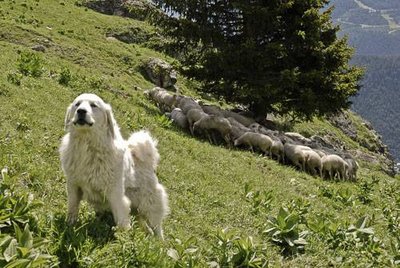
Chien de protection (patou) et troupeau ovin sur l'alpage de Montafia, commune de Termignon. - PNV - JOURDAN Jérémie  Pastoralism
PastoralismCowbells in the alpine pasture
"During the summer a flock of transhumant sheep graze on the mountain pasture, near the shelter or on the slopes of the Hauts de Villaroger Nature Reserve. Present from June to October, the sheep and lambs are kept by a shepherd, accompanied by his sheep dogs, Border Collies more often than not, and by a ""Patou"", which is a watchdog and guard dog. The presence of these working dogs is permitted in the heart of the park."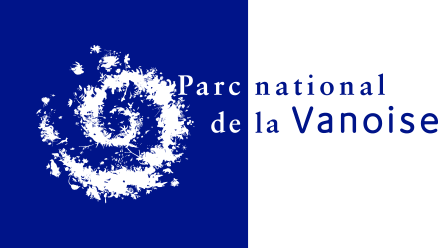
 Glacier
GlacierThe imprint of the glaciers
From the terrace, the view opens onto the glaciers of Fond and Sassière. Still snow white, they are none the less victims of climate change, having receded over the years. As you climb up to the small promontory overlooking the shelter, you can see in the direction of the Grand Col, old heaps of material deposited during the retreat of the ice. These moraines, partially vegetated today, testify to an age when the glaciers were still masters of the landscape.
Rénovation de la toiture du refuge PNV de Turia, en tavaillons de mélèze. - PNV - BALAIS Christian  Refuge
RefugeA rustic and friendly refuge
"Perched at 2,410 metres in altitude, the chalet-refuge de Turia showcases its Chaloin-type architecture, which is emblematic of the simple and friendly welcome of the ""small"" refuges of Vanoise built in the 1970s. These quickly assembled wooden refuges combine rusticity, sturdiness and rapid heating. The “bachal” water (trough-shaped water reservoir) is captured under a rocky glacier, several hundred metres away. Inside, the shelter is equipped with a UV filter to purify the water."
